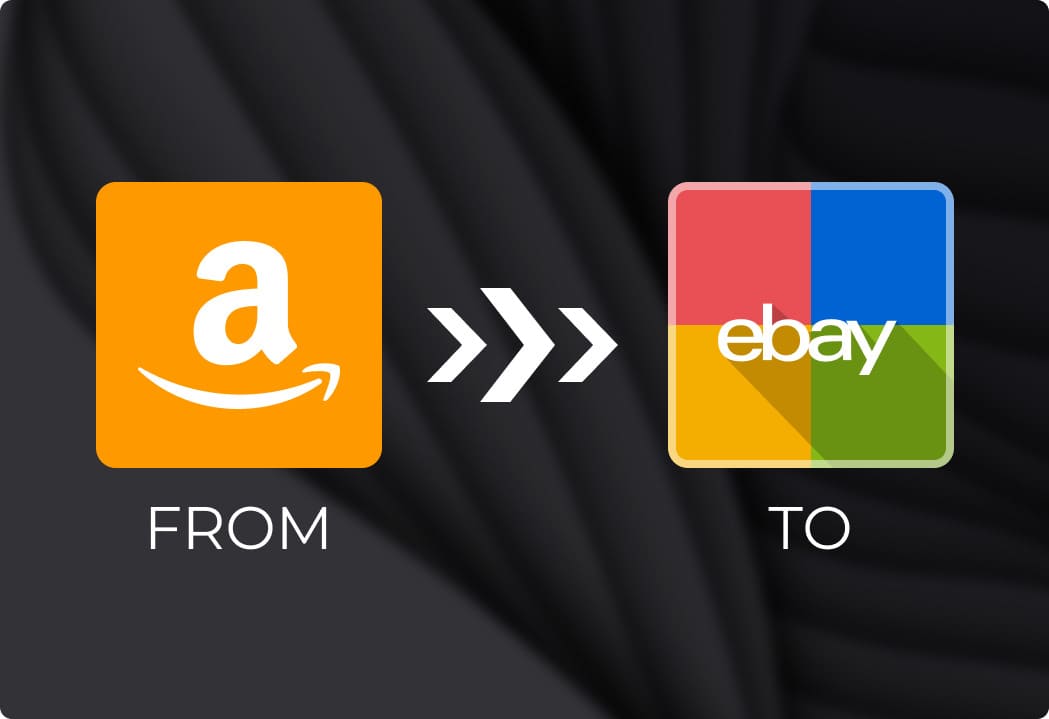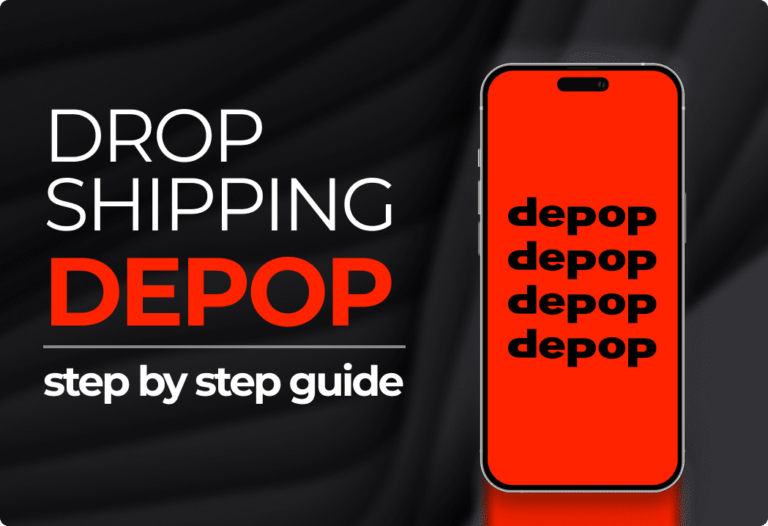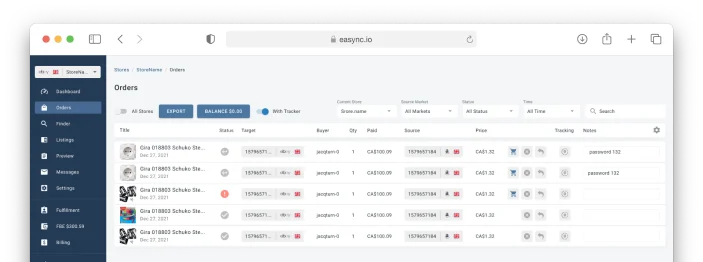The article describes the differences, pros, and cons of dropshipping eBay vs. Amazon. It contains detailed information about their dropshipping policies, steps for dropshipping store organization, and tools for dropshipping automation on both platforms.
Dropshipping eBay vs. Amazon – Comparison review
Dropshipping has recently received new popularity with the increased popularity of marketplaces. This business model developed in the 60s when mail-order catalogs were popular.

The dropshippers received the orders from Customers from this catalog and purchased them from warehouses or fulfillment centers. The general idea remains the same: drop shippers only take care of organizing supply chains from suppliers/manufacturers to customers.
Dropshippers should create an online store, find the product niche and relevant suppliers, take orders and communicate with customers, and distribute the orders among suppliers. The dropshipper does not have inventory expenses but should pay for advertising campaigns and the design of the website.
Dropshippers can choose not only the suppliers but also where the online store will be located. There are normally two ways to place an online store: marketplace or own domain. If you have existing popular social networks, you can organize your online shop there.
In this article, we will focus on the most popular marketplaces for dropshippers: eBay and Amazon.
We will identify the capabilities and special features of each platform and provide suggestions for better organizing your store there.
eBay vs. Amazon for Dropshippers – Comparison review
We will start with a short description of each platform. It is essential to highlight that not all marketplaces work with dropshippers; for some, sellers must produce the sold goods.
Amazon
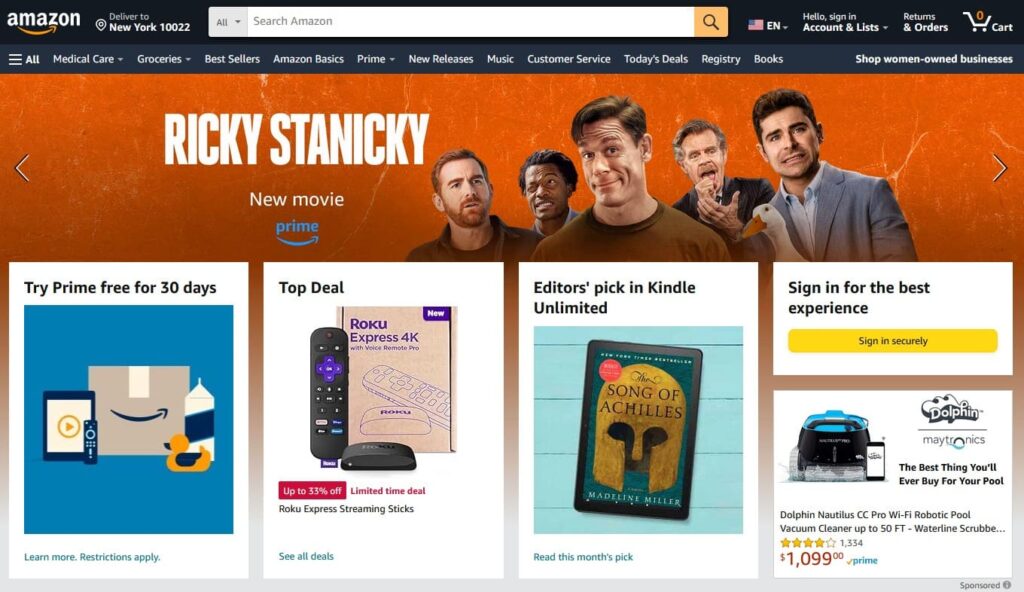
Amazon is a multinational company founded in 1994 by Jeff Bezos. It is the most popular e-commerce platform in the USA and Canada. You can purchase almost all types of goods there – media, electronics, clothes, gourmet food, software, home appliances, jewelry, and much more.
In February 2024, amazon.com was number twelve on the list of the most visited websites (for example, eBay was only in the 48th place). The revenue of this platform is enormous, which is why many dropshippers try to open online stores there to have access to billions of potential customers – visitors of the website.
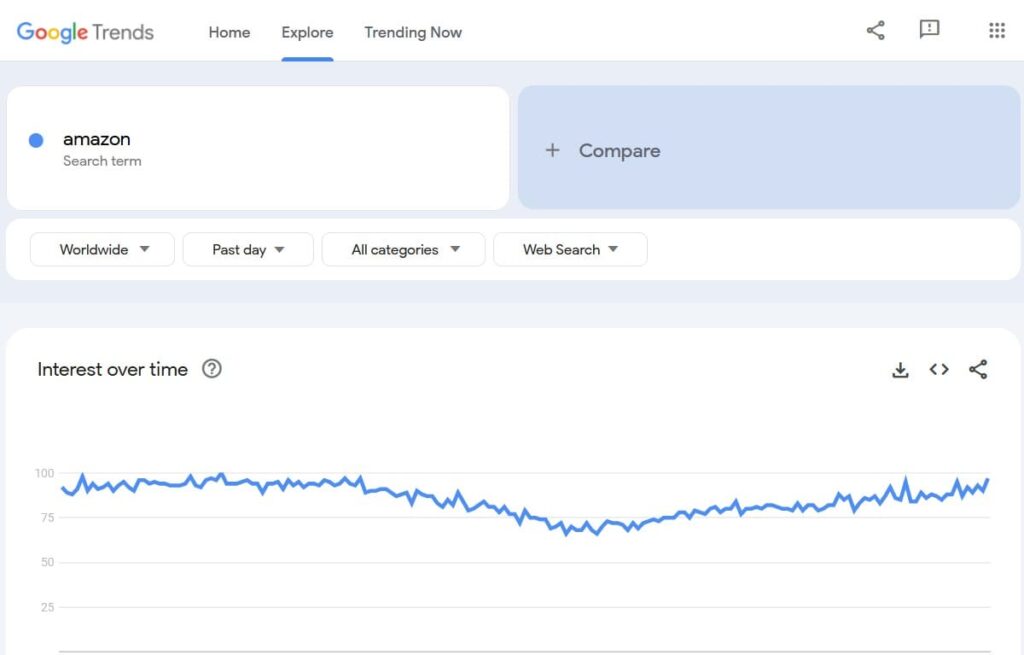
Unfortunately, as with any other marketplace, Amazon has a strict dropshipping policy.
All dropshippers should indicate themselves as sellers on all invoices, packing lists, delivery receipts, and all documentation. Only dropshippers are responsible for all returns.
Only dropshipping contact data should be indicated on all documents to avoid customer confusion. Suppose you intend to use third-party logistics services. In that case, you will still be the only person responsible for all documents, and all other contacts should be removed before delivery to the Customer. Violation of the Amazon policy may lead to an account ban or restriction on the use of the Amazon Merchant Fulfilled Network.
Such strict policy changes the preferable route of goods – directly from manufacturers or retailers to the customers. You need to agree beforehand with your suppliers regarding contact information or use intermediate storage to repack the goods.
It is forbidden by the platform to list items from another retailer platform or to create an order on another retailer platform after you receive the one on Amazon. Amazon requires you to have an authorization letter from your supplier to allow you to sell goods under your brand.
If you fulfill all requirements, you will receive benefits, and Amazon will attract customers to your listings. For beginners, there are hundreds of tutorials about their search engines and marketing tools and how to use them to create the most visited online store. More pros and cons are summarized in the table below:
- Access to the billions of potential customers
- Many product categories to sell
- Free Seller Trainings
- Minimum investments
- Minimum inventory is required to start the business
- Numerous tools for automated dropshipping
- Possibility to use FBA (Fulfillment by Amazon) to help with shipping and customer support
- Fast deliveries
- Dropshipper should always be indicated as a seller on all documents
- Authorization letter for selling food is required
- Responsible for all returns, refunds, and replacements
- 10-15% sell fee on every item
- No control of marketing campaigns all determined by Amazon
- Complicated to create long-term relations with your customers because of the huge competition
- High customer’s expectations
As you can see, there are plenty of pros and cons to Amazon dropshipping. Also, you should take into account that a dropshipper has limited quality product control. So, it is not easy to dropship with Amazon; maybe it is easier with eBay?
eBay
eBay is the second most popular e-commerce platform in the USA. It is obvious that many dropshippers want to open an online store there if Amazon is not popular in their product category or the policy is too strict. eBay is also a multinational e-commerce company founded in 1995 by Pierre Omidyar.
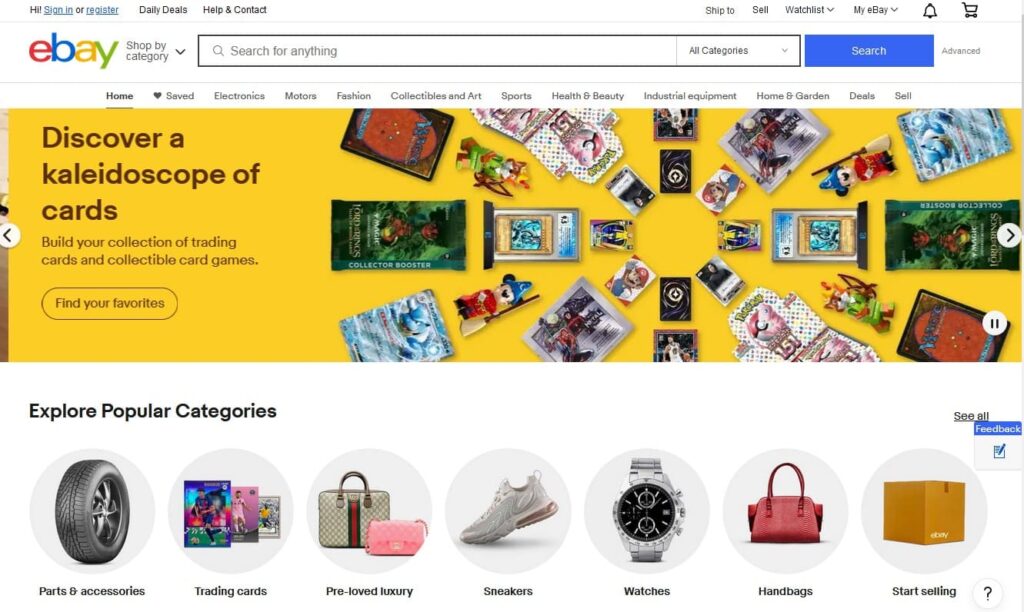
More than 2 billion active listings are used by 132 million active buyers all over the world. eBay has a wide choice of product categories for selling – Car accessories, sporting goods, clothes, home appliances, health and beauty products, pet suppliers, books, and many more.
eBay allows dropshipping if you deliver directly from a wholesale supplier, but you should be responsible for safe delivery on time and the satisfaction of the customer. It is not allowed to purchase the ordered items on another marketplace or from another retailer (similar to Amazon). That means you can’t supply directly from AliExpress or Alibaba. All sellers have to follow the User Agreement and applicable laws. Violation of these rules may lead to an account ban.
eBay charges several fees for all sellers: insertion fee (35 cents per listing above the 200 free), final value fee (12.9% from the sales price on average, varies from the product categories), and store fees ($4.95/month for 250 free listings and higher). For some product categories, other fees may be applicable – international fees, dispute fees, fees for optional listing upgrades, fees for real estate listings, and more.
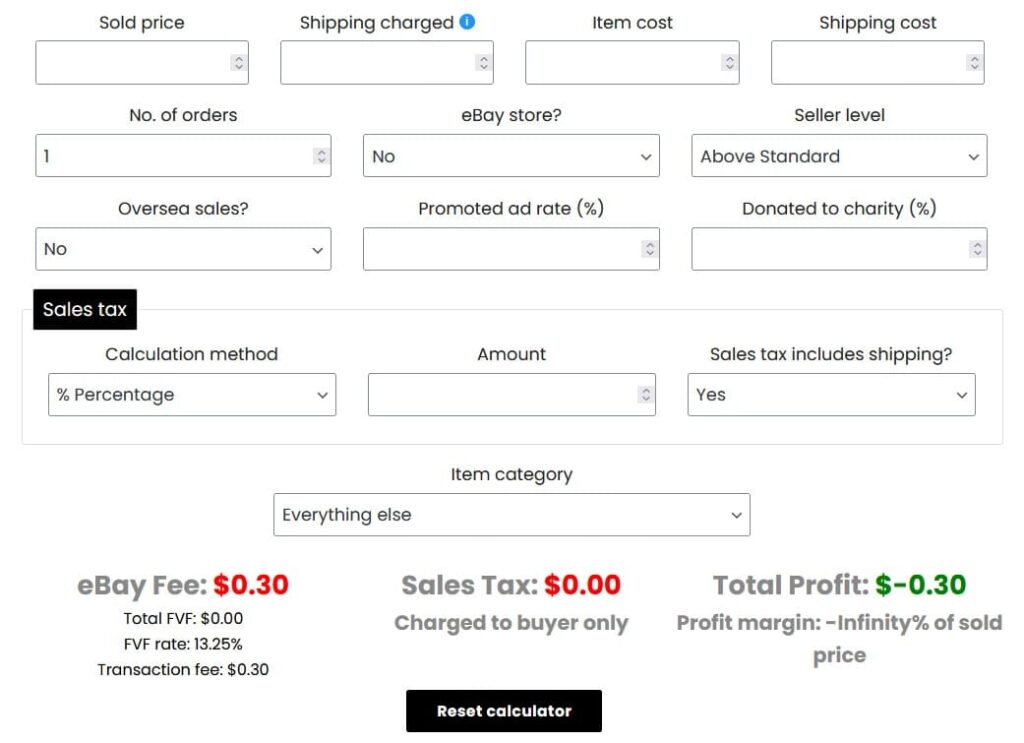
eBay does not have hidden fees and has defined subscription fees (starter store – $7.95/month). For beginners, opening a new store and opening 200 first listings will be free. All fees will be charged a month after your first sale, and you can calculate them easily. Unfortunately, eBay has some limits for sellers – you can find yours in the Seller Hub. Such limits are set to protect customers from unreliable sellers. So, after you prove that you are a reliable seller, you can apply for a limit raise.
- Dropshipping is allowed on eBay
- The second most visited marketplace in the USA
- Numerous free tutorials and guidance
- Wide choice of selling categories
- User-friendly interface
- 200 free listings per month
- Updated International Shipping Program allowing to send products to eBay Hub for further delivery
- No restrictions on product quality like Amazon
- Order fulfillment from other retailers and on other marketplaces is prohibited
- Several fees from the platform
- Complicated to sell goods from own Brand
- Do not get access to your customers info
- Limit for newcomers to sell up to 10 items with a total of under $500 per month
- Difficult to gain regular customers
- High competition
The short Ebay review has shown that the platform allows dropshipping, but some rules apply. It seems not so complicated to follow them. We will further go step-by-step through starting a dropshipping business on these platforms to find similarities and differences.
How to start dropshipping on Amazon and eBay
The first step is to determine which marketplace you choose, taking into account all the specific features that were listed above. Your choice should be based on the popular product categories on this platform.
For example, eBay’s popular categories are disposable face masks, smartphones, men’s accessories, headphones, and power tool batteries. On Amazon, the top product categories in 2023 were home and kitchen appliances, beauty products, car accessories, clothing, shoes, and jewelry.
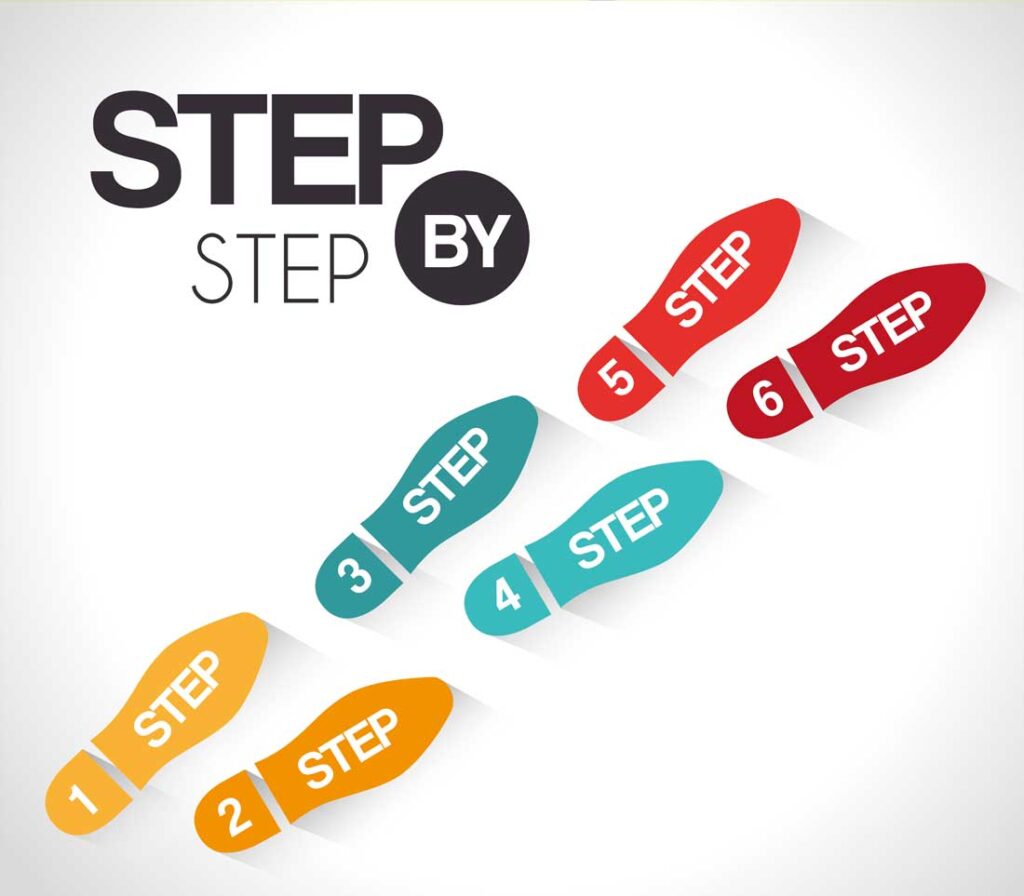
By the way, both marketplaces have a list of prohibited products to sell (alcohol, animals, fine art, currency, dietary supplements, drugs, medical devices, and more) and some policies for most product categories. Before you open your online store, please check the requirements for your product categories (FDA approval, certificates, and other approval documents).
The guide on how to start a dropshipping business on Amazon and eBay for each platform consists of the same six steps.
1. Create an account on the chosen marketplace.
Sellers on Amazon should register on Sellercentral.amazon.com. You need to provide the following details about yourself: government ID, international credit card, business email address, phone number, tax information, and bank account details. You should also indicate your business location, type, and name (normally, this name is registered with the federal government).
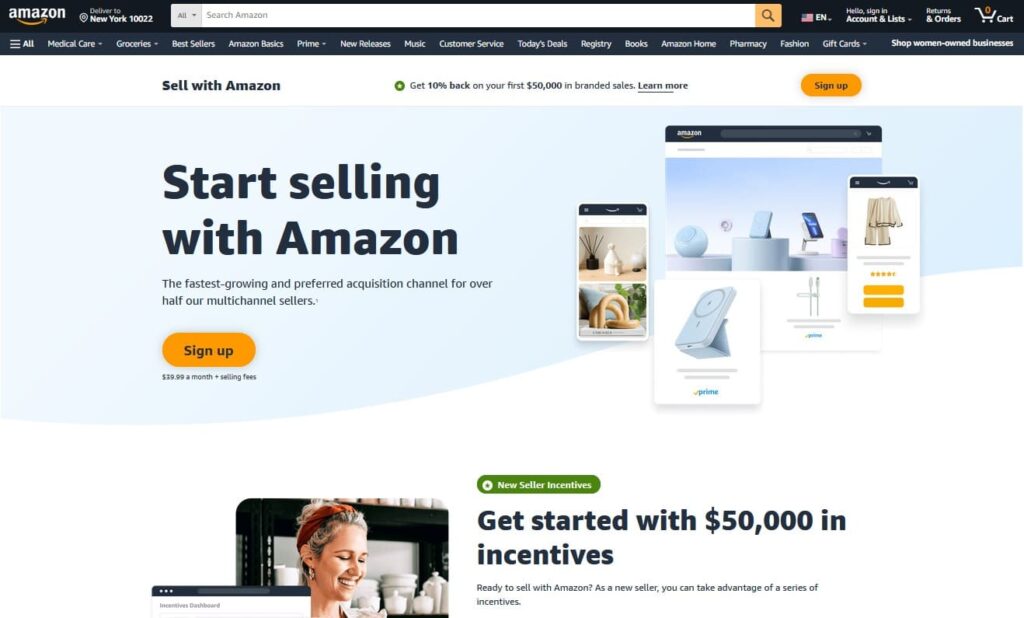
For seller registration on eBay, you need to indicate basic information about your business, such as name and registration place. Depending on the listing quantity, you need to choose the correct subscription plan. To validate your account, it should be connected to your banking account with enough money to perform the subscription payment.

2. Choose your product category.
For both services, we recommend performing corresponding market research to determine which items are the best sellers using numerous tools (some examples we will provide in our next section). Some categories on Amazon require approval. After you register on eBay and your account is approved, you need to wait 2-4 weeks to receive approval from eBay. For beginners, we recommend starting with small and cheap items.
3. Find suppliers.
You can change the sequence of items 2 and 3. The proper choice of suppliers is the only quality control that the dropshipper may perform. Moreover, you need to anonymously order the product you sell to check the quality. The more suppliers with similar quality for the same product, the more stable your order fulfillment will be. You can reduce delivery expenses if your suppliers are located in different parts of the country. It is essential to follow Amazon and eBay policies when organizing supply channels.
4. Organize your online store
You can use integration apps to connect your accounts to third-party websites to automate order fulfillment, order tracking, import product descriptions, and track deliveries. At this stage, you also need to take care of unique photos, texts, and videos with proper keywords to create organic traffic.
5. Create product listings
For newcomers, Amazon sets limits on the number of products you may include in listings. eBay limits the number of items (ten) you are allowed to sell and their price. If you have satisfied customers and sales, this number will increase over time. The correct filling of product titles, descriptions, and proper images impacts the marketplace’s algorithms.
6. Start promotion campaign
All marketplaces have many suppliers for the same products. To stay ahead of others, you need to participate in marketplace campaigns (e.g., sponsored product ads for Amazon or promoted listings for eBay) or use other allowed methods.
For Amazon and eBay, the main allowed promotions are the following:
- Research the typical portrait of your customers and competitors and improve your service.
- Track the availability of similar items from competitors and react quickly when their products are out of stock.
- Set fair prices. You are not allowed to sell items cheaper in other stores. You may use automatic pricing. This tool automatically sets the price to less than $1 or 0.10 cents than the competitor’s price.
- Perform SEO of your online store (photos, descriptions, FAQs, keywords, titles, and more).
- Encourage buyers to write positive reviews.
- Make discounts and promotions on Prime Day, Boxing Day, and other Amazon Deal Days.
- Promote your store on your social networks, and you may provide coupons or other encouragements.
It is obvious that there are not so many differences between opening an online store on Amazon or eBay. For all marketplaces, in addition to test orders from the supplier, do not forget to test the full order fulfillment scheme at every stage. The differences are mainly connected with choosing the best product category and provision of legal documents. For sure, the interface of both marketplaces is slightly different, but both marketplaces have many useful tools to simplify all stages.
Tools for automated dropshipping with Amazon and eBay

Each marketplace has a unique set of dropshipping software that helps you start and expand your dropshipping business. You can find free tools, AI tools, and paid ones. Normally, all-in-one tools are paid ones. We will list only the 10 most popular ones for each platform.
For Amazon, we suggest:- Jungle Scout (keyword analysis, market analytics, inventory automation, rank tracking, competitors monitoring).
- Cahot (End-to-end order fulfillment);
- Easync (Auto ordering, repricing, deliveries tracking, market research);
- AliExpress Dropshipping center (Order fulfillment, market research, inventory management);
- AMZ Scout (optimization of product catalog, search of product niches and best-selling products);
- FeedbackWhiz (advertising campaigns, product review optimizer);
- SellerLabs (SEO for Amazon online stores, advertising content);
- Spot N Paste (integration tool for connecting Amazon shopping cart with your other apps for order fulfillment);
- SellerBoard (Analytics of your online store, SEO).
- Easync (the same functionality as for Amazon – discover profitable products, suppliers’ finder, profit analytics);
- DSMTool (integration in AutoDS, product listings, syncs stocks and prices, order processing);
- Wallet Monitor (product listings editing and creation, competitors monitoring, product activity monitoring, order processing simplification);
- ZIK (winning products finder, search of profitable niches, market analytics);
- Doba (import winning products, finder of reliable suppliers, shipping automation);
- Black Lister (product listing, keyword analyzer, photo editor, SEO);
- Price-fox (listing reprice, competitor’s analytics);
- Salefreaks (all-in-one-solution, listing creator, managing account, item locator, delivery tracking, pricing).
There are many tools that are designed to make dropshipping operation processes less time-consuming and focus more on business development and growth.
As you can see, the tools are mainly different for eBay and Amazon because these platforms have different algorithms.
Conclusion
In our article, we tried to focus on the advantages and disadvantages of dropshipping eBay vs. Amazon. We provided you with a short review of both platforms.
No matter which platform you choose, all benefits of the dropshipping business model are kept. Strict dropshipping policies do not push dropshippers to produce sold goods. Taking into account some of the specialties of these platforms and automated tools, you can easily organize online stores in both marketplaces.
eBay and Amazon provide an easy start for all dropshippers and give access to huge audiences and marketing opportunities. The competition on eBay is less than on Amazon, and there are fewer quality restrictions, but there are some limits for product listings. You may also try dropshipping from Amazon to eBay and vice versa. Unless you try, you do not succeed!

Eugene Stepnov – Head of Marketing at Gologin. Formerly, He was the COO of Flatlogic and the co-founder of Kuoll. His main expertise is in promoting complex web SaaS products that lead in mar tech, affiliate marketing, dropshipping, cyber security, and web development.
